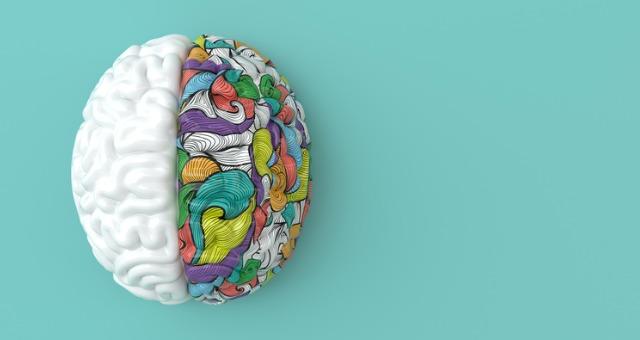How Mindfulness is Transforming Education: Benefits, Strategies, and Impact on Student Success
Mindfulness has emerged as a powerful tool in schools, transforming classrooms across the globe. as educators seek innovative solutions to boost student success and well-being, mindfulness in education is quickly becoming a cornerstone of modern teaching methods.This article explores how mindfulness is transforming education, the proven benefits for students, effective classroom strategies, and the long-term impact on academic and personal growth.
What is Mindfulness in Education?
mindfulness is the practice of paying attention to the present moment, purposefully and without judgment. In educational settings,mindfulness involves teaching students—alongside teachers—to be aware of their thoughts,feelings,and bodily sensations. By cultivating this awareness, students develop emotional intelligence, resilience, and improved focus, which are vital for academic success and overall well-being.
Benefits of Mindfulness in Schools
Research shows that integrating mindfulness into education yields meaningful benefits for both students and teachers. key advantages include:
- Improved Focus and Concentration: Mindfulness practices help students manage distractions, sharpen attention, and increase cognitive performance.
- Reduced Stress and Anxiety: Regular mindfulness exercises lower cortisol levels, relieving stress and anxiety often associated with academic life.
- Emotional regulation: Students become better at understanding and managing their emotions, reducing behavioral issues in the classroom.
- Enhanced Social Skills: Mindfulness fosters empathy and compassion, leading to better relationships between peers and teachers.
- Higher Academic Achievement: Studies demonstrate a correlation between regular mindfulness practice and improved grades and test scores.
A 2018 study published in Frontiers in Psychology found that mindfulness-based interventions led to significant improvements in attention, emotional regulation, and academic performance among students.
How Mindfulness is Transforming Customary Classrooms
The shift toward mindfulness in education signals a move from rote memorization to holistic child development. Here’s how:
- Whole-Child Approach: Education now emphasizes personal growth, emotional intelligence, and mental health alongside academic achievement.
- Discipline Reform: Mindfulness reduces punitive discipline by providing students with self-regulation and conflict-resolution tools.
- Teacher Well-being: Mindfulness isn’t just for students; educators benefit from reduced burnout and increased classroom satisfaction when participating in mindfulness training.
Effective Mindfulness Strategies for the Classroom
Want to introduce mindfulness in your school or classroom? Here are proven mindfulness strategies suitable for students of all ages:
1. Mindful Breathing
Start each day or lesson with a one-minute breathing exercise. Encourage students to focus on their breath, helping settle anxieties and foster a calm learning habitat.
2. Guided Meditation and Visualization
Use age-appropriate guided meditations or visualization exercises. Tools like audio tracks or scripted guidance can help younger learners engage with the practice.
3.Mindful Movement
Short yoga sessions or stretching breaks throughout the day help students reconnect with their bodies and release tension.
4. Gratitude Journaling
Encourage students to write down three things they’re grateful for each day. This practice nurtures positivity and emotional awareness.
5. Sensory Awareness Activities
Simple activities like listening to soothing sounds or mindful eating exercises can ground students in the present and cultivate attention.
6. Mindful Listening Circles
Create a space where students can share thoughts and feelings without interruption, teaching respect and deep listening.
Real-World Case Studies: Mindfulness Success Stories
Many schools worldwide have implemented mindfulness programs with measurable success. Here are two inspiring examples:
1. Robert W. Coleman Elementary School (Baltimore, USA)
- Replaced traditional detention with a “Mindful Moment Room.”
- Students practice breathing, meditation, and reflection when feeling upset.
- Result: Dramatic decrease in suspensions and improved classroom behavior.
2. The MindUP Program (Global Implementation)
- Curriculum based on neuroscience, positive psychology, and mindful awareness.
- Implemented in over 1,000 schools internationally.
- results: Students reported less stress, better attention span, and more optimism about learning.
Practical Tips: How to Integrate Mindfulness into Your School or Classroom
- Start Small: Integrate short mindfulness practices, like one-minute breathing, into daily routines.
- Model Mindfulness: Practice mindfulness yourself to demonstrate its value and foster a supportive environment.
- Use Existing Resources: Leverage free online mindfulness guides (like Mindful Schools), apps, and classroom posters.
- Involve Families: Share mindfulness techniques with parents to reinforce learning at home.
- Encourage Reflection: Allow time for students to reflect on how mindfulness helps them, building ownership of the practice.
- Adapt to Age and Needs: Customize mindfulness activities to fit different age groups and learning abilities.
Addressing Common Challenges and Solutions
Implementing mindfulness in schools can face obstacles such as skepticism, time constraints, or lack of training. Here’s how educators can overcome them:
-
Challenge: Lack of Understanding
Solution: Offer professional development for teachers, provide research evidence to stakeholders.
-
Challenge: Busy Schedules
Solution: integrate brief mindfulness practices into existing classroom routines or transitions.
-
Challenge: Student Resistance
Solution: Introduce mindfulness in engaging, accessible ways; explain the benefits in relatable terms.
Long-Term Impact of Mindfulness on Student Success
The positive effects of mindfulness in education extend beyond the classroom. Studies show students who practice mindfulness exhibit:
- Better coping mechanisms for stress and adversity
- Improved self-esteem and mental health later in life
- Higher levels of empathy and conflict-resolution skills
- Sustained academic achievement
As these students mature, they carry forward the tools of self-awareness, empathy, and resilience—qualities valued in higher education, workplaces, and everyday life.
Conclusion: Embracing mindfulness for a Brighter Educational Future
Mindfulness is undeniably transforming education, creating more compassionate, focused, and resilient learners. By embracing mindfulness practices, schools can foster environments that nurture both academic excellence and emotional well-being. Whether you’re a teacher, school leader, or parent, integrating mindfulness into daily routines can make a profound difference in student success and personal fulfillment.
Ready to take the first step? Explore mindfulness activities,share success stories with your community,and join the movement toward a healthier,happier educational experience.

